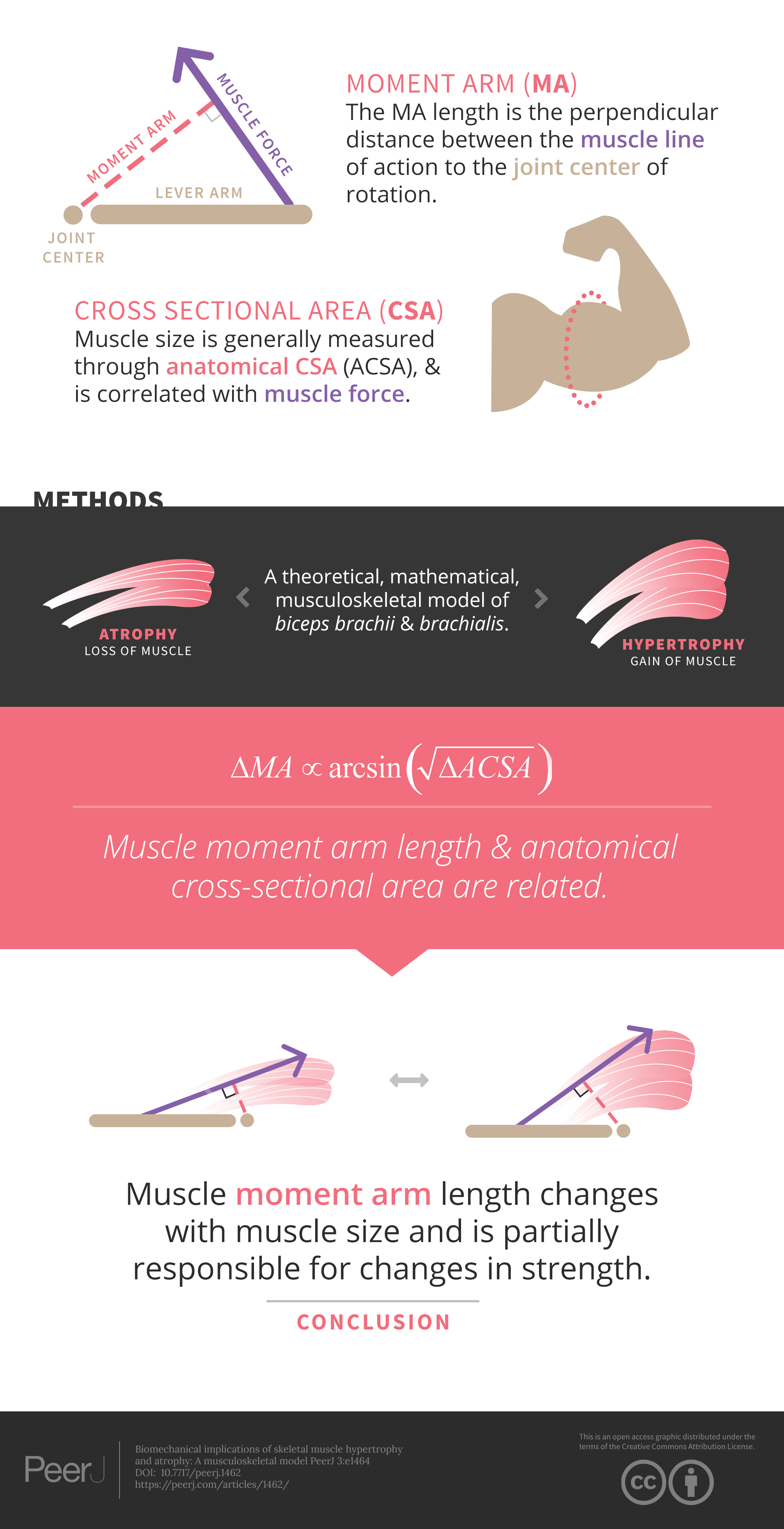LAY SUMMARY
It is well-known that a bigger muscle allows for greater joint moment production capabilities. The reasons for this have often been attributed a larger muscle being able to create more force, and while this is true, it ignores another, just as important factor: the muscle’s moment arm (or mechanical advantage). We created a theoretical, mathematical, musculoskeletal model of the biceps brachii and brachialis that were modeled to grow (hypertrophy) and shrink (atrophy), and we found that, by changing the muscle’s size, it also changes the muscle’s moment arm (or mechanical advantage). This is another factor that determines strength that should be considered.
ABSTRACT
Muscle hypertrophy and atrophy occur frequently as a result of mechanical loading or unloading, with implications for clinical, general, and athletic populations. The effects of muscle hypertrophy and atrophy on force production and joint moments have been previously described. However, there is a paucity of research showing how hypertrophy and atrophy may affect moment arm (MA) lengths. The purpose of this model was to describe the mathematical relationship between the anatomical cross-sectional area (ACSA) of a muscle and its MA length. In the model, the ACSAs of the biceps brachii and brachialis were altered to hypertrophy up to twice their original size and to atrophy to one-half of their original size. The change in MA length was found to be proportional to the arcsine of the square root of the change in ACSA. This change in MA length may be a small but important contributor to strength, especially in sports that require large joint moments at slow joint angular velocities, such as powerlifting. The paradoxical implications of the increase in MA are discussed, as physiological factors influencing muscle contraction velocity appear to favor a smaller MA length for high velocity movements but a larger muscle MA length for low velocity, high force movements.
CITATION
(2015) Biomechanical implications of skeletal muscle hypertrophy and atrophy: a musculoskeletal model. PeerJ3:e1462 https://doi.org/10.7717/peerj.1462
